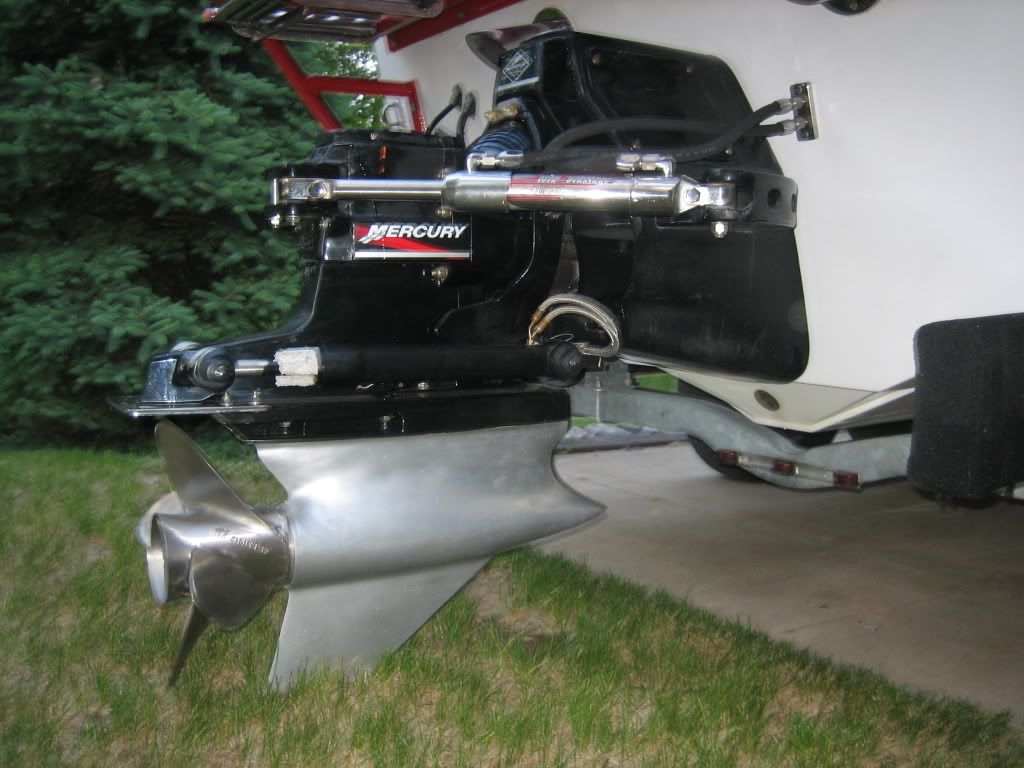Wayne Pennell
New member
The slip is a measure of efficiency on plane. When talking about coming on to plane slip isn't really applicable. Aerating does however allow the props to slip or more accurately stated ventilate. When the prop ventilates it allows the engine to rev up. Years ago many boats would ventilate on their own while coming on and at times had a negative effect but, now days with modern propellers and ultra high speed set ups a controlled ventilating is a must. Many thru the hub exhaust propellers have holes[ some with adjustable sizes ] to allow you to adjust the ventilation to improve a hole shot. Speed master drives are obviously different and aerating tubes are the way to get air in behind the leading edge of the prop to get it to ventilate.
For example a 525 and #6 boat like Amsoil can swing { not sure exactly } like 34 inch propellers and can go 130 some miles an hour. Say 3000 rpm's is 75 mph and 5300 is 130 { just guessing }. The bottom half of the propeller is doing all the work. The boat is running on plane and has little drag. Now to get it there with the available power, gear ratio, prop selection, entire bottom and drive dragging, entire prop biting, in a rpm range well under the power curve you need to slip the props to allow the engine to gain rpm's and get into its significant power range.
So how would a vee hull and standard bravo drive react to a tube....if it's not set up near the surface? It seems in theory it will still introduce air at the leading edge of the prop causing it to rev higher thus being able to run a higher pitch prop which would create more speed? Or would it just make the slip be unmanagable?


